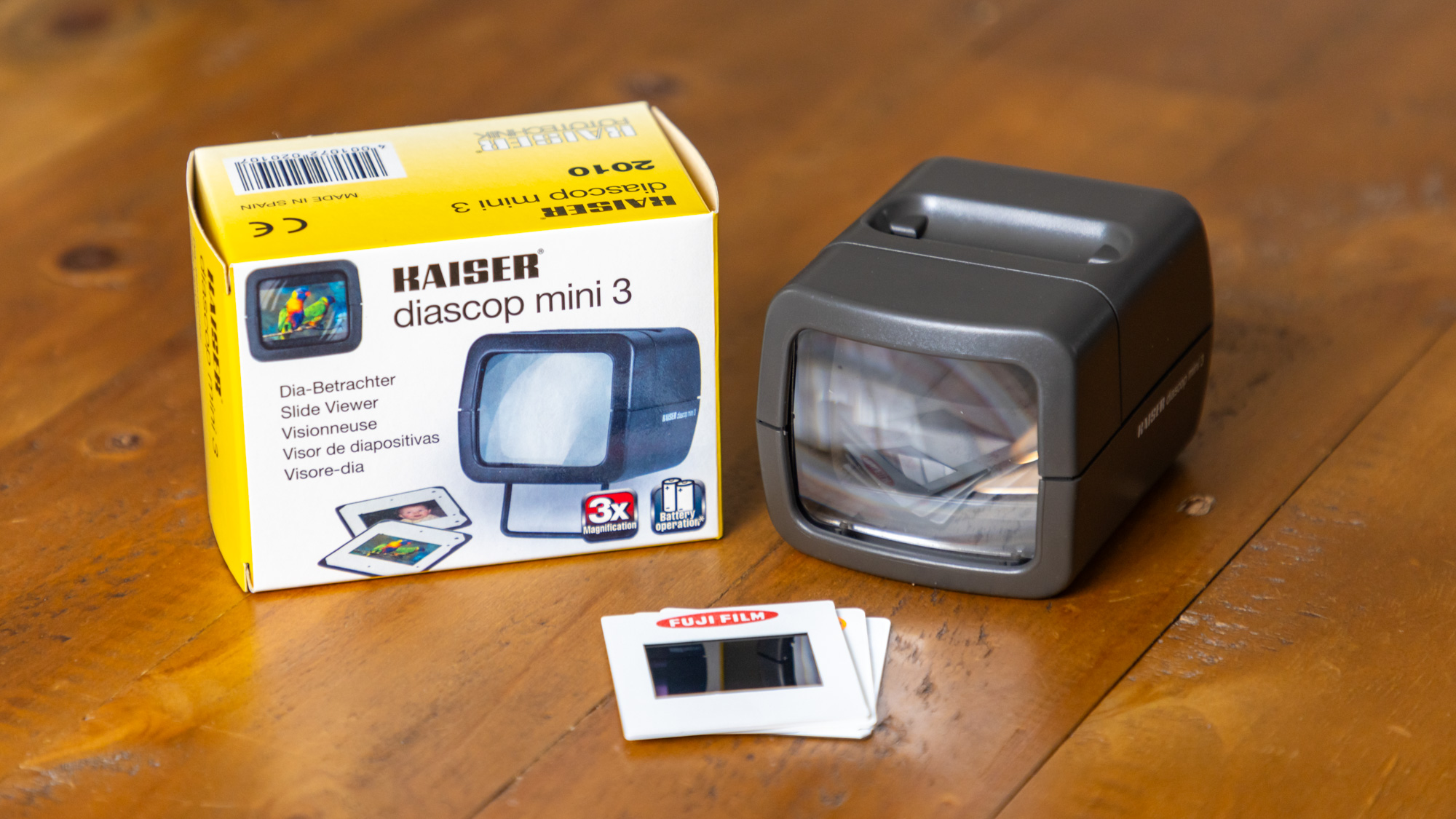
German company Kaiser Fototechnik was founded in 1945 and has a rich history of creating high-quality photographic accessories. The Diascop Mini 3 is a German-designed but Spanish-made slide since its inception in 2010, and continues to be a reliable slide viewer to this day.
For this review, I managed to get hold of one and also other slide viewers, including the Photolux / Zuma SV-3 and Kodak 35mm Slide Viewer, which are both also devices for viewing slides and have comparable prices, so I’ll give my thoughts on how it compares to these other models. For all of the slide viewers and scanners that I’ve reviewed recently, you can check out the best slide viewers buying guide.
Kaiser Diascop Mini 3 Slide Viewer: Specifications
Kaiser Diascop Mini 3 Slide Viewer: Price
German optics company Kaiser makes its Diascop Mini in two versions, the Diascop Mini 2 with a 2x magnification and the Mini 3, which was the version I got hold of for review and has a more powerful 3x magnification. While both share a near identical build, the difference in price can be quite notable, with the Mini 2 costing $38 US or £23 UK, while the Mini 3 costs $50 US, so not too big a leap, but in the UK it costs a fair bit more at £35 at the time of writing.
It’s also worth noting that the Zuma / Photolux SV-2 LED slide viewer is a handheld slide viewer that costs $15 US or £12.99 UK. However, whilst this product has a much more attractive price ,I found it frustrating to use in my recent review, so I would recommend one of the Kaiser models instead.
For a not too dissimilar amount of money to the Kaiser you could alternatively look at something like the Kodak 35mm Slide Viewer which although bigger, also allows reels of negatives to be passed through and has a collection tray on its front to make it easier to get through large batches of slides.
Kaiser Diascop Mini 3 Slide Viewer: Design & Handling
The German-designed Kaiser Diascop Mini 3 is actually made in Spain and feels a little smaller than the Zuma / Photolux SV-2 slide viewer I reviewed recently.
In my review of the Zuma / Photolux SV-2 slide viewer, I was quite critical of its poor build quality and testing the Kaiser model was a breath of fresh air as it feels much more elegantly put together, although this is to be expected from its price point – which is three times higher.
The construction is mostly plastic, with the exception being some metal electronics inside and the large 2x2” glass screen for three times magnification. Although mainly plastic, it feels solid and tolerances are all very tight, which makes it feel premium.
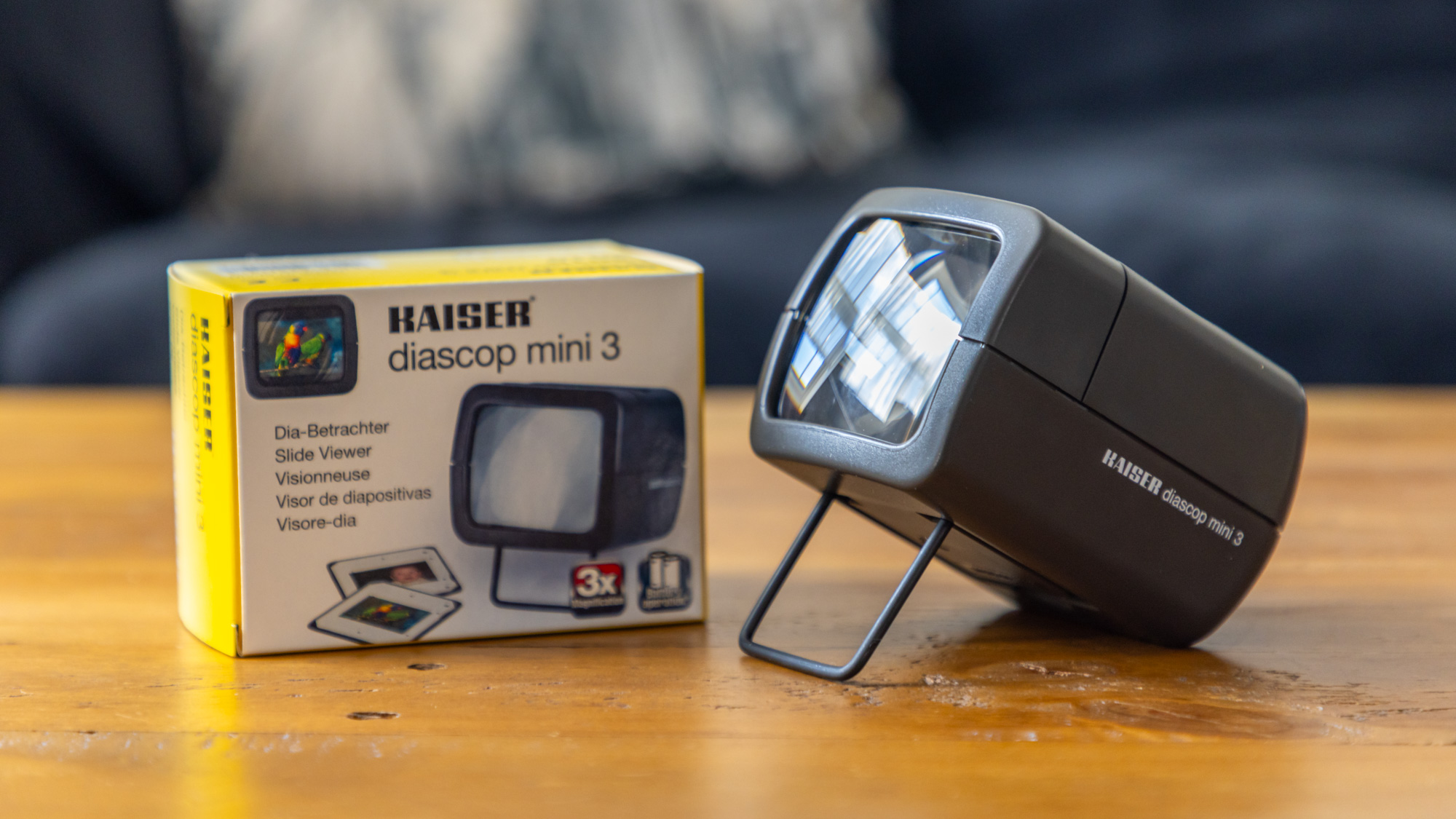
The base sports a pull out metal hinge to create a better viewing angle when used at a desk, though I have to say it doesn’t create a steep enough angle to be of much use when holding it at arm’s length to switch slides, so needs tilting back a little to see clearly. It is however so light and portable it’s no problem to use whilst sitting away from your desk, say in a chair or casually lounging on your sofa.
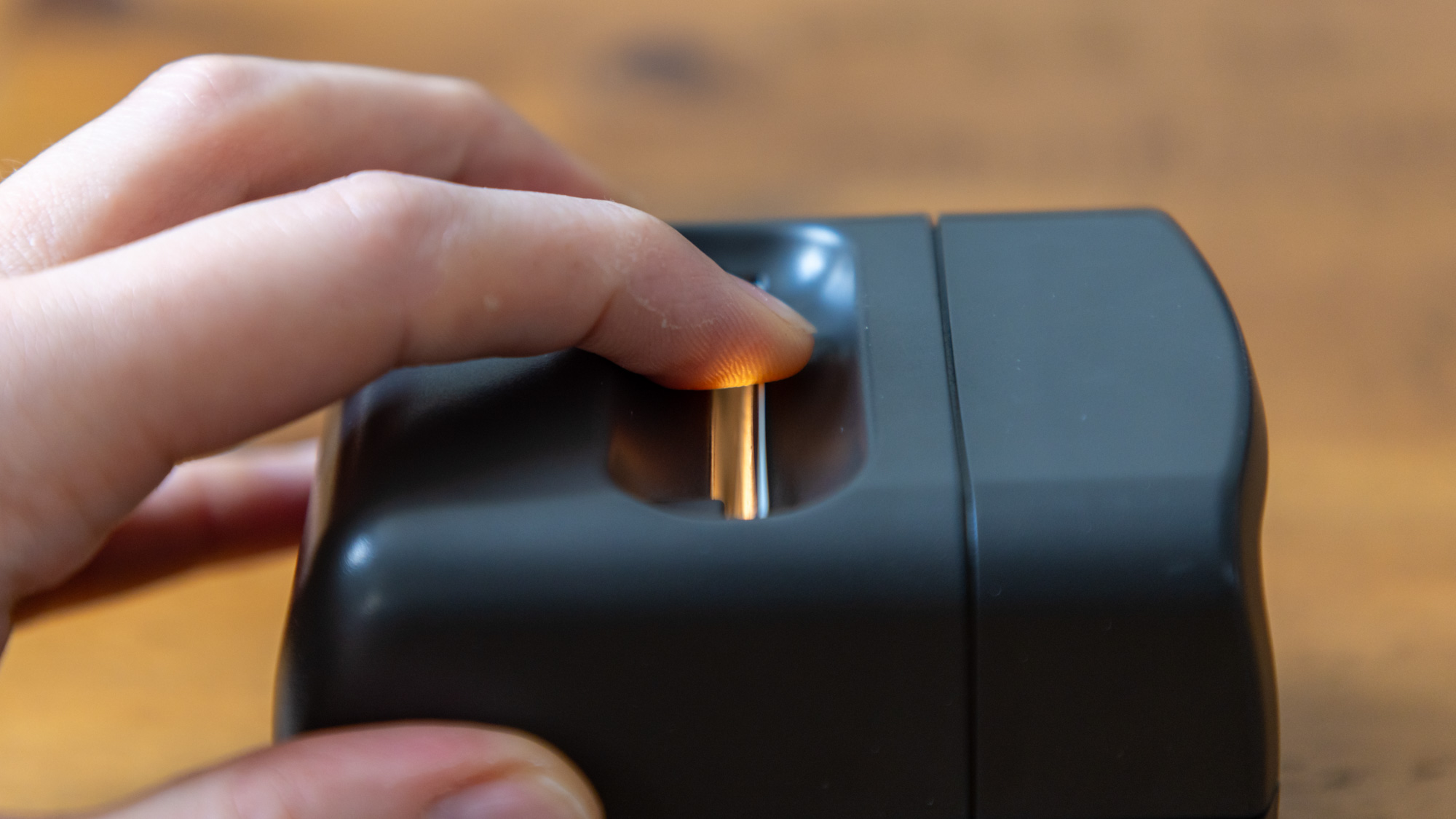
One design feature I really appreciated was the opening to the slide slot is recessed which makes it easier to get your fingers in and fish your slides out. I tested the Diascop Mini 3 with a variety of plastic and cardboard slides, some of which were quite thick at 3mm in depth, while others were warped and distorted – it handled all of them flawlessly without ever jamming up.
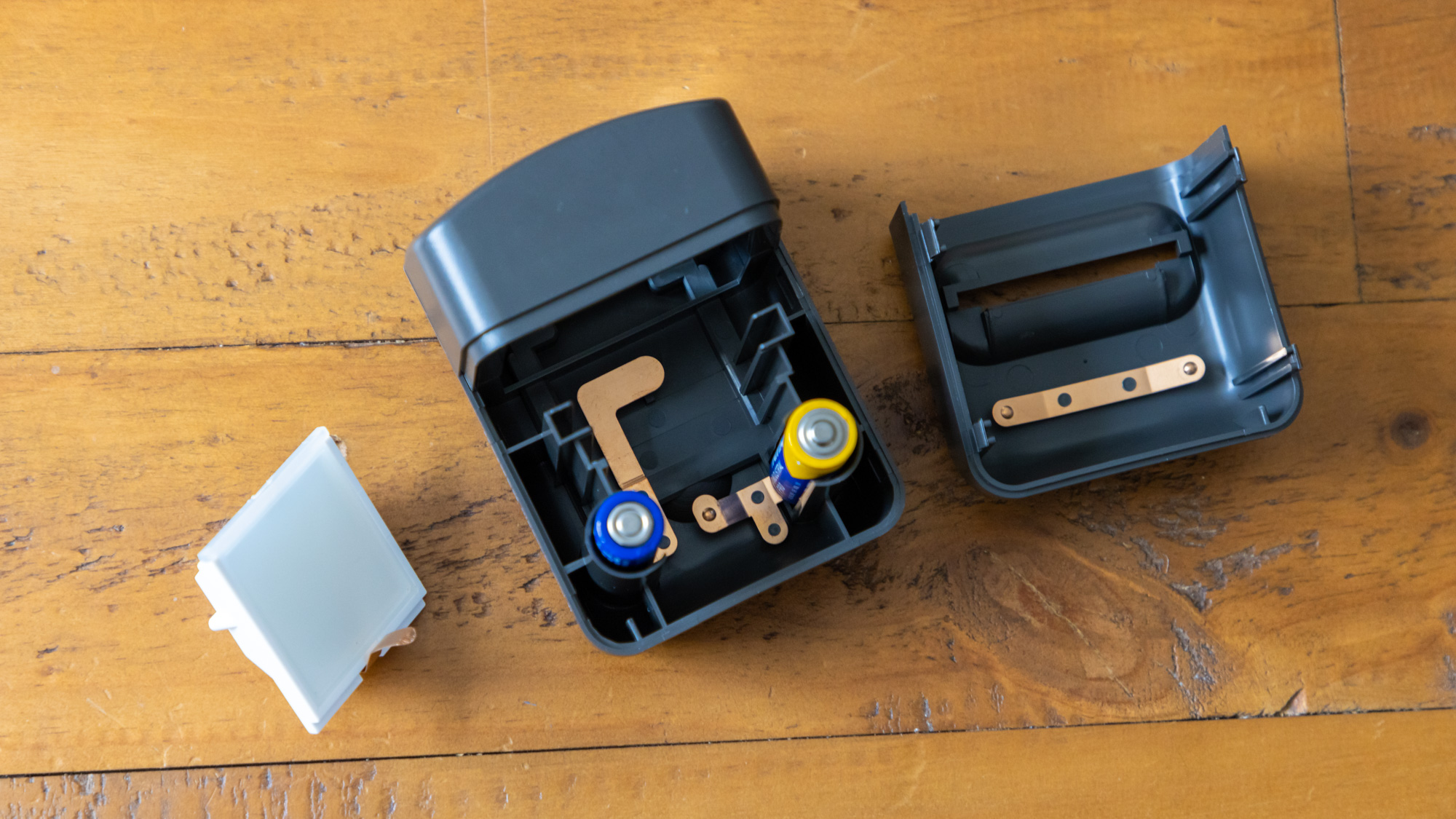
On the surface the Kaiser Diascop Mini 3 may look similar to the Zuma / Photolux SV-2 LED slide viewer but I’m happy to say that Kaiser have gone with a completely different design for the internals and battery compartment and this is for the better. The whole top section around the slide opening pulls off and is easy to remove and place back, this reveals the space for two AA batteries to be inserts (though sadly none are included) as well as the diffusion screen and replaceable 25v 0.3A lamp. I found it frustrating to use the Zuma/Photolux SV-2 because it was very tricky to get all of the components to line up without falling out of place when re-attaching its rear cover, but the Kaiser had superior design and everything worked easily and without a hitch.
Kaiser Diascop Mini 3 Slide Viewer: Performance
As previously mentioned, I found the build quality to be a night and day improvement over the Zuma / Photolux SV-2 LED slide viewer, though is admittedly three times the price. It’s very nicely built and put together and makes for a much more enjoyable experience when looking back through your old slides.
However, it’s not a perfect product. The viewing angle from the metal kickstand wasn’t steep enough for me to find it useful, the provided bulb is also very warm and makes pictures look very yellow. This second point could be a pro or a con, as I did see some users leaving comments on film viewers that used a cooler neutral LED saying that it wasn’t warm enough and pictures looked too cool – so perhaps this is down to personal preference. The bulb can be swapped out regardless, though the bulb that comes with it has a diffused surface which in addition to the diffusion screen and is pointing upwards rather than directly towards the viewing screen – these things add up in combination to help the Diascop Mini 3 achieve even lighting coverage of the slides. I didn’t see any central hotspotting as I did with the overly bright LED in the Zuma / Photolux SV-2 LED slide viewer.
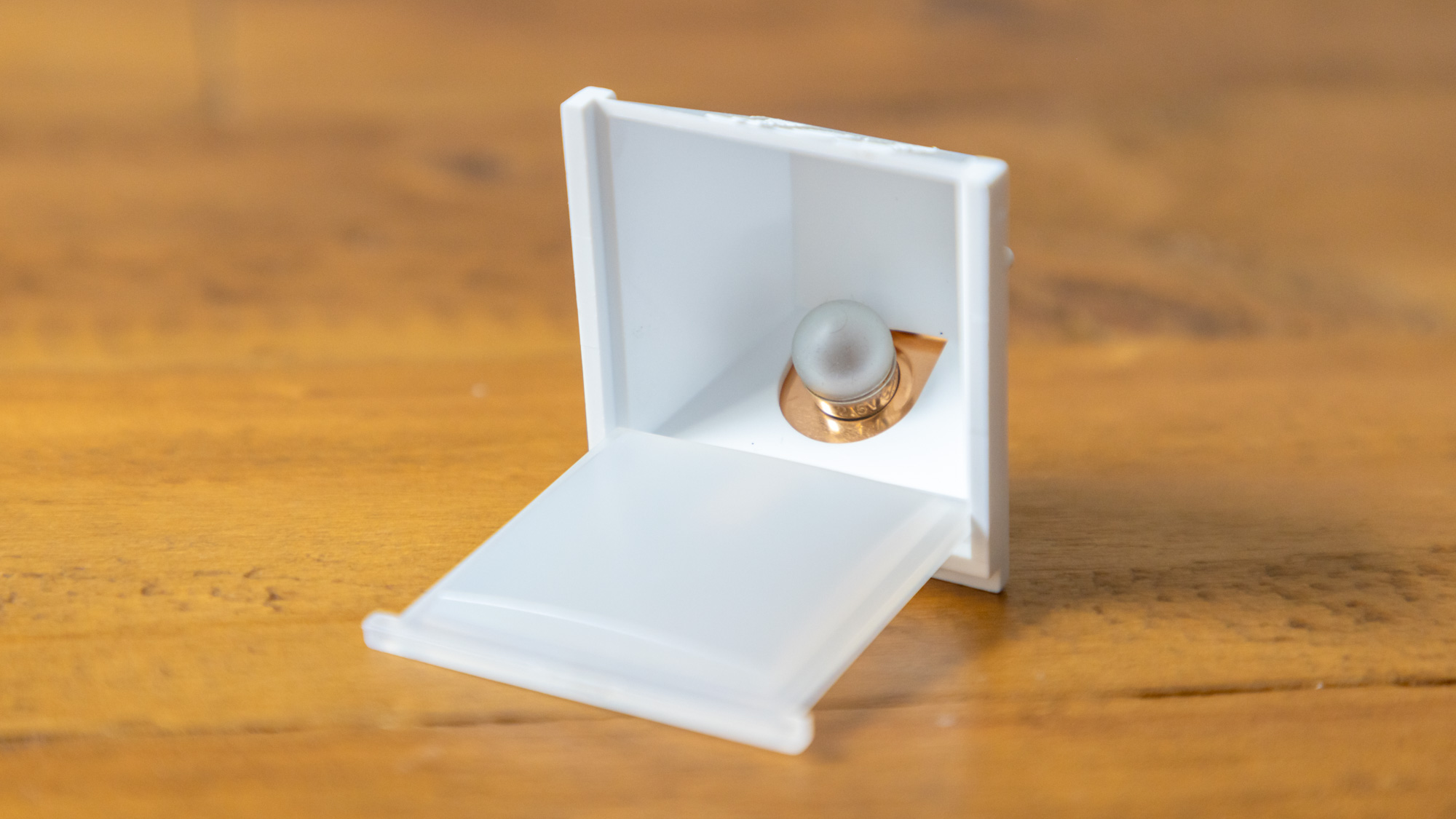
The Kaiser Diascop Mini 3 slide viewer lacks any sort of pass-through for film negatives and has no ability to scan, so you’d need to look at other products if you’d like to do this. The Kodak 35mm Slide Viewer is capable of this but easily takes up three times the deskspace and is less portable.
Whilst Kaiser claim a magnification of three times, I didn’t find that to be the case. Starting with a slide with its picture measuring 35x24mm on the Kaiser’s 2x2” screen the picture was less than doubled to around 50x32mm. I also checked the same slide on the Kodak 35mm Slide Viewer which also claims a 3x magnification (though has a larger 3x3” display) and this produced an image around 70x35mm which was higher than three times magnification.
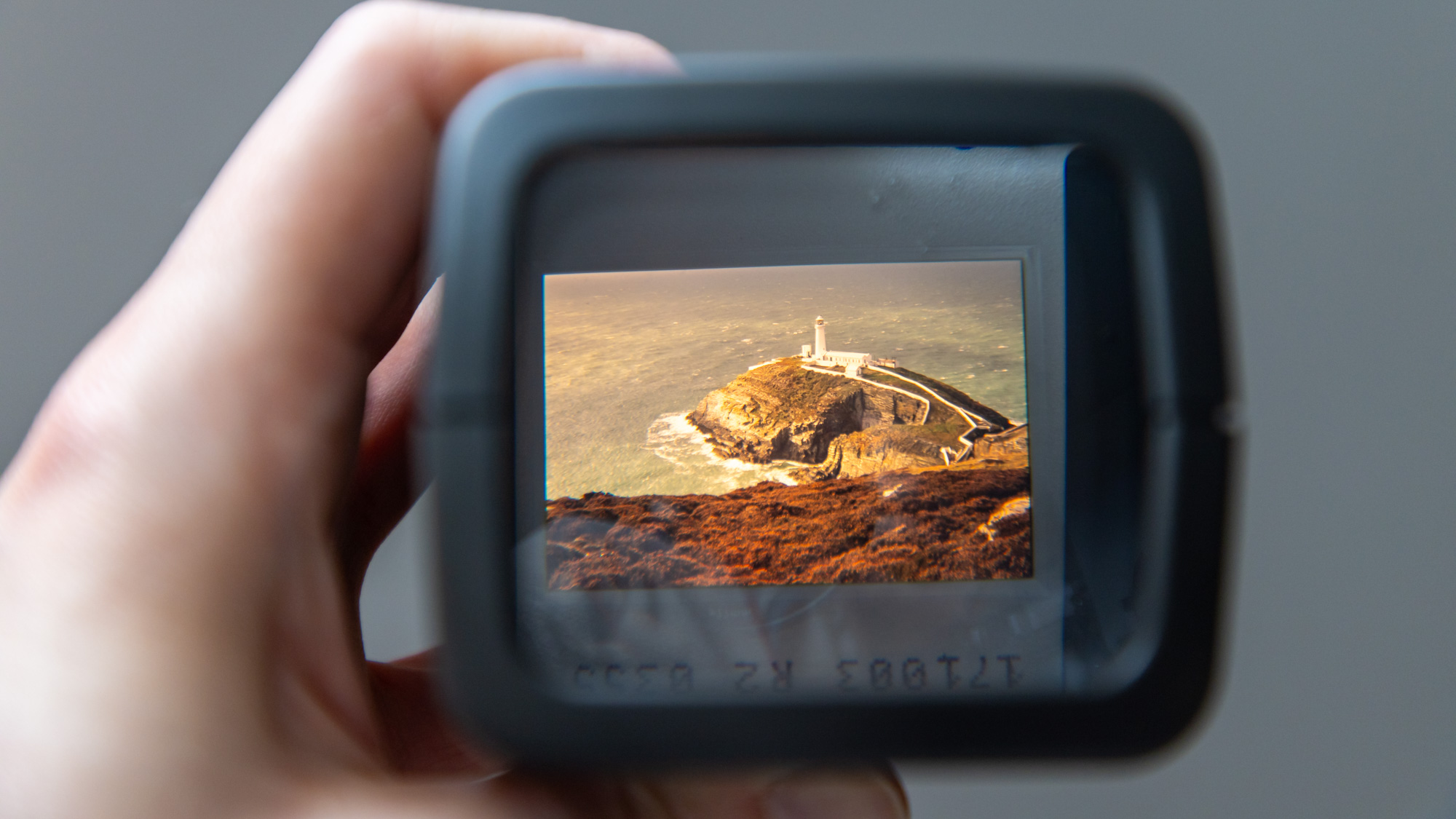
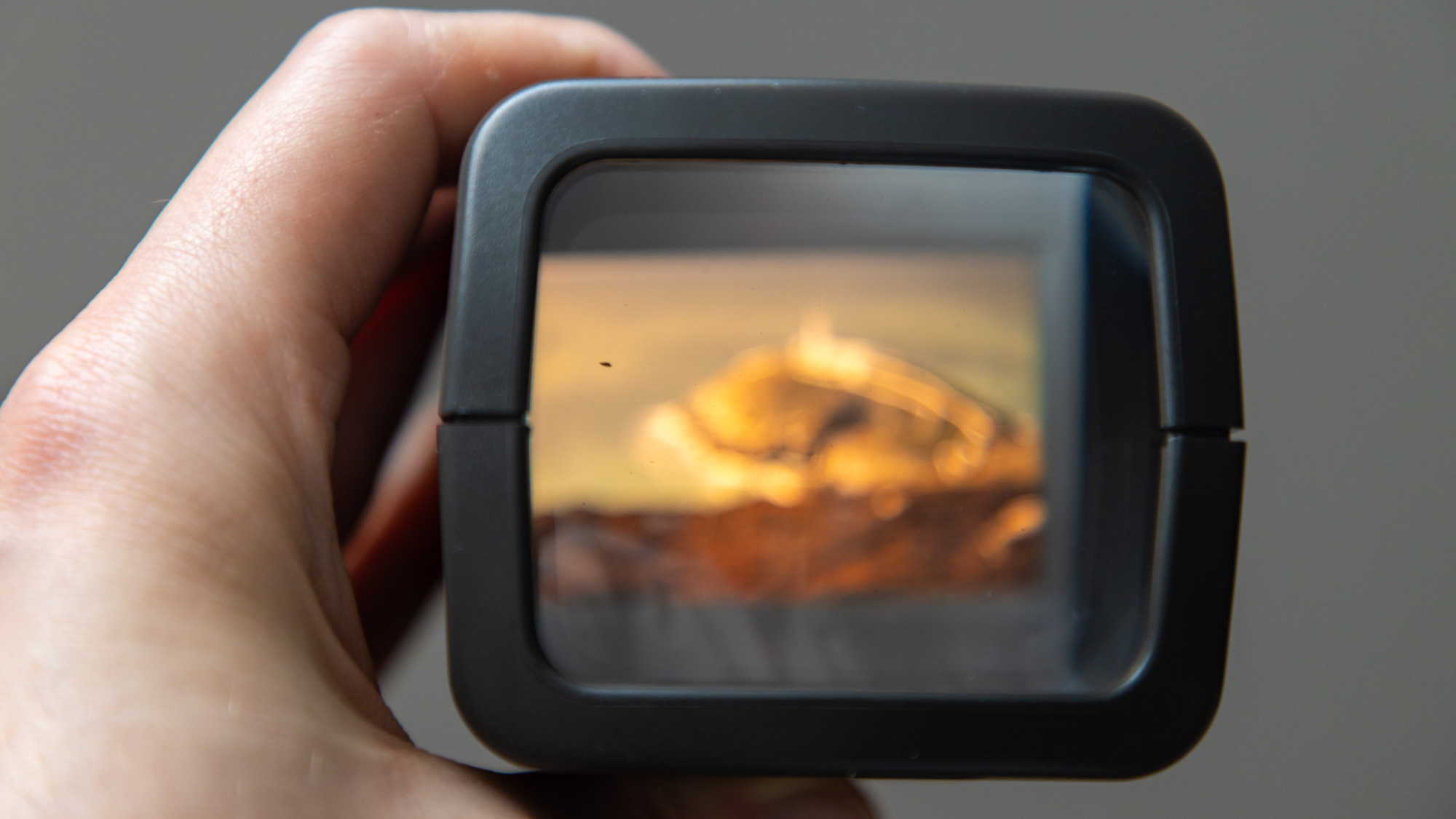
I found the build quality from Kaiser to be very good, excellent in most cases, but one area that disappointed me was dust and debris inside the lens. When the Diascop Mini 3 Slide Viewer arrived I noted some small bits of debris that looked like tiny plastic particles perhaps leftover from the manufacturing process – I thought no problem and proceeded to take the battery cover off and blasted off the dust particles I could get at with a handheld air blower. However there seemed to be a few bits of dust trapped between the glass screen elements and these were rather distracting when looking at my slides. Air power from my handheld blower couldn’t reach between the two glass elements so I had to resort to tapping the slide viewer on a desk a few times to knock the loose dirt out of view.
Kaiser Diascop Mini 3 Slide Viewer: Verdict
Overall the Kaiser Diascop Mini 3 Slide Viewer impressed and I can firmly recommend it if you’re looking to view slides from the comfort of a desk or couch. It’s a little expensive for what it is, but the build quality is overall very good. Remember, this device has no ability to view reels of film negatives, nor can it scan or digitize, so if this is your intention you’ll need to look elsewhere.
My two pet peeves with the Diascop Mini 3 was its bulb was a little on the warm side and gave slides a yellowish tint – though this could be fixed by simply swapping it out for a cooler LED. My second issue was that dirt in between the glass elements was distracting and difficult to clean, though I was eventually able to knock the dirt loose and out of the way. These issues aside, it does what it says on the tin and is a far superior product to the cheap and cheerful Zuma / Photolux SV-2 LED slide viewer.







